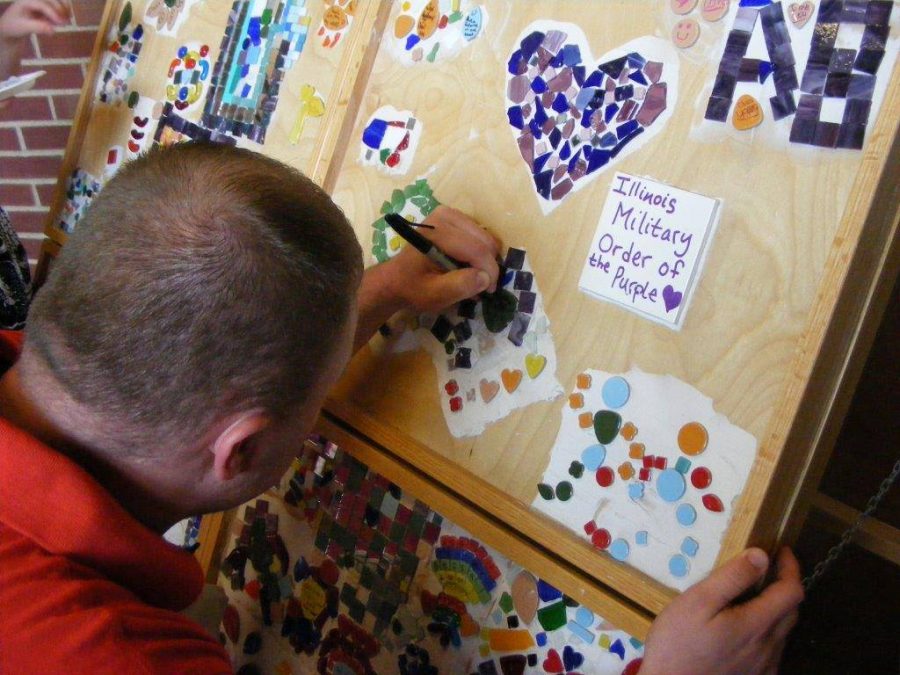Institute for Therapy through the Arts provides alternative therapy
Facebook photo from Institute of Therapy through the Arts
The Institute for Therapy through the Arts provides art, drama, music and dance or movement therapy for clients with a wide range of backgrounds.
January 28, 2020
Brad Drozdowski said his therapy clients speak to him through hand drums, tambourines and other small percussion instruments.
Drozdowski is a music therapist and volunteer coordinator at the Institute for Therapy through the Arts, 2130 Green Bay Rd, a nonprofit organization that provides creative arts therapies.
While ITA is based in Evanston, it has over 50 locations in the Chicago area and partners with over 40 schools, nursing homes and other community organizations, development director Jessica Gardner said. The organization began in 1975 as a part of the Music Institute of Chicago, becoming an independent nonprofit five years ago.
Since the 1980s, it has provided art therapy, drama therapy, music therapy and dance or movement therapy for clients with a wide range of backgrounds, including autism, Alzheimers, substance abuse and trauma. Last year, ITA served 1,520 people from ages 2 to 97.
ITA exists to serve clients who need a more active, “holistic” therapy experience, executive director Jenni Rook said. But not everyone knows about the opportunity of art-based healing, she said.
“They might not know that they need to be more connected to their body and try dance movement therapy, or that the best way to express themselves is through their music,” Rook said. “Because our clients aren’t artists and musicians. They’re just people.”
None of ITA’s therapies require previous art experience, Drozdowski said. The therapies don’t focus on skill. Rather, they prioritize communicating what words fail to say and engage many different sectors of the brain, he said.
Drozdowski said even when clients don’t meet their stated goals or have a difficult session, he finds his work fulfilling.
“There’s still always that sort of ground benefit of people connecting,” Drozdowski said. “The fact that I get to do it with music — I can’t think of anything better,”
Bella, an ITA client, participates in the organization’s art therapy program to help with her anxiety.
At their annual Healing Arts Celebration fundraiser, Bella told her story in front of 150 people. Gardner said Bella was “so poised and so eloquent.”
“I’ve heard her talk about what she sees in her in her future that she didn’t imagine possible just a few years ago,” Gardner said. “To me that that says everything.”
Rook said she feels most rewarded when she sees clients discover abilities they didn’t know they had, like regain speech after a stroke or communicating with loved ones.
“I will never work as hard as my clients; they work extremely hard,” Rook said. “But I’m going to work as hard as I can to make sure that I try everything possible to help them to rehabilitate.”
ITA is working to make these experiences more accessible to all people. They provide financial assistance on a sliding-scale basis, meeting clients at their financial need level to reduce fees. While she said Evanston is an “arts-rich and accepting” community Rook said art therapy should extend everywhere, so she wants to open more locations throughout the state.
ITA will host a conference in March as part of their goal to expand creative arts therapies, with a focus on “expressing the unspeakable,” including conversations about sex and disabilities and gender identity.
Drozdowski said he spends nearly all of his time working for ITA in some capacity.
“It’s one of those dream jobs,” he said. “You really just don’t ever want to leave.”
Email: [email protected]
Twitter: @delaneygnelson


